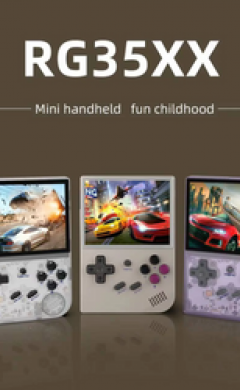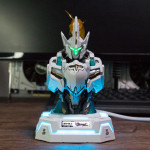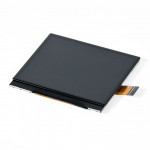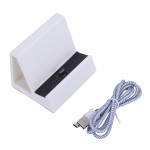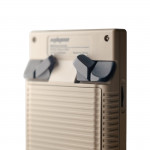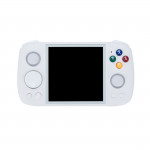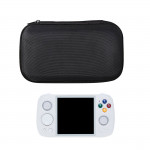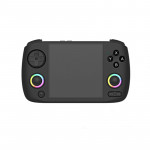The RGB30: Who Is It For?

The RGB30: Who Is It For?
The Game Boy and the Sega Game Gear were the only portable gaming devices available when I was a child. It's just one, but I don't want to annoy the Sega fans today. Yes, there were other devices in the 1990s, but by the time they appeared, the Game Boy had already taken over the market, and no colourful screens or unusual designs could reverse that. As a result, the Game Boy holds a particular place in the hearts of many of us; although it is not technically difficult to imitate, doing so has proven challenging. Devices like the Analogue Pocket and, to a lesser degree, the Retro Pixel Pocket are excellent at it. Unfortunately, finding both of these is difficult; you'll have to spend more if you do.
Fortunately, countless handheld options are available, ranging from a $20 Data Frog to a $500 Odin 2. There are several possibilities available if we limit our analysis to the budget category, but all of them feature a 4:3, 3:2, or 16:9 screen. These are acceptable for most systems; you will undoubtedly have to make some concessions, but in general, we have learned to accept this is the way things are. Regretfully, none of these ever feel like they belong with Game Boy games (or even Game Gear, for that matter). Although they function effectively, they never seem to be the main attraction. It's unfortunate, in my opinion, since even while it's not very spectacular or challenging to get Pokémon Yellow to run at full speed, I still find it special to watch a game I played for many nights with a flashlight run on a crisp, backlit screen.
Screen
You will, therefore, need to either spend $300 on an Analogue Pocket, find a Retro Pixel Pocket, spend nearly $200 on a modified Game Boy, or purchase one of the many handheld options with a 4:3 screen and put up with the black bars if, like me, you want to see the square games of your youth run on a gorgeous screen. Although none of these are perfect, we had them for a while. I'm not whining; we have many fantastic options, but square screens aren't popular. The RGB30, a brand-new $90 handheld with a stunning 4-inch 1:1 720×720 SQUARE screen, was created after Powkiddy threw darts at the wall again. They installed an RK3566 SoC in it.
Power
The RK3566 is the same CPU that powers the 353V, 353P, 353M, RK2023, x55, and Game Force ACE Indie, in case you're unfamiliar. I'm sure I'm missing a lot more, but it works. Fortunately, there is a lot of community support for this chip because so many handhelds use it. As a result, you will have a few options for operating systems, including ARKOS, JELOS, and MinUI. Games from the 8-bit platforms to the N64 and Dreamcast will also be available to enjoy.
Gaming
We can relive Game Boy and Game Boy Color games in a way that gives them the recognition they merit, thanks to the screen's aspect ratio and resolution. Because the bezel is so thin, it's easy to overlook the few black bars on the top and bottom. Additionally, the RGB30 has a lot of power, so you can activate shaders to enhance the nostalgic experience. Given how many vertical Game Boy games I own, I never would have imagined that my favourite method of playing them would be a horizontal Powkiddy portable, but here we are. The RGB30's vertical size gives it a slab-like feel rather than a standard candy bar, like a scaled-down 2DS.
Pico-8
If the thought of gorgeous Game Boy and Game Boy Color games isn't enough to convince you, think about how the RGB30 is the most excellent method to play Pico-8 games. If you're unfamiliar, I'll explain quickly: A fantasy console called PICO-8 simulates the visuals of 8-bit computers. Platformers, shooters, puzzles, and adventure games are just a few genres you can play in its expanding library of community-made games with a timeless charm. After purchasing the console ($15), most games are free downloadable and have a native 1:1 aspect ratio. This indicates that playing these games on the RGB30 is the best option. Like Game Boy games, Pico-8 games' straightforward pixel-based design creates a unique appearance that truly pops on the RGB30. Here is a little selection of games that I believe you ought to play:
- CELESTE classic
- POOM
- Terra
- PICO World Race
- Outbreak
- Low mem Sky
- HIGH STAKES
- Into Ruins
- The Lair
- PICO Driller
Visuals
Since many SNES games are native 8:7, the RGB30's screen is exceptionally well suited for vertical shooters, DS, and SNES games. This implies that games like Super Mario World and Super Metroid can take up most of the screen and look fantastic! Unfortunately, not all SNES games look good at 8:7, and there is some debate about whether these games are better played at 4:3 or 8:7. I suggest you try it out and make your own decision. To get you started, here is a list of games and a comparison:
- A Link to the Past = 8:7
- Super Metroid = 8:7
- Super Mario World = 8:7
- Final Fantasy VI = 8:7
- Super Mario Kart = 8:7
- Secret of Mana = 8:7
- Donkey Kong Country 2 = 8:7
- Star Fox = 8:7
- Mega Man X2 = 8:7
- Final Fantasy IV = 8:7
- Yoshi’s Island = 8:7
- F-Zero = 8:7
- Super Mario RPG = 8:7
- Terrinigma = 8:71
- Turtles in Time = 8:7
- Earthbound = 8:7
It's unclear why the game producers kept some objects stretched when playing in 4:3, as you can see. Perhaps they thought it wasn't important or didn't want to fix it. Some games look better on a square screen, particularly if you wish for that pixel-perfect appearance. Regardless of your preference for 8:7 or 4:3, games look fantastic on this screen, and even though taller content is the most noticeable, all 4:3 systems still have a respectable amount of real estate. You have the same screen size as all 3.5-inch handhelds, such as the Retroid Pocket 2S and Miyoo Mini Plus, although if those are the systems you're most interested in, I suggest the 405V or 405 M.
Final Thoughts
The user experience is just as, if not more, crucial to creating a successful handheld than power. The Miyoo Mini and the RG35xx are two examples of how a handheld device that initially seems incomprehensible may transform into something fantastic once the community accepts it. Fortunately for us, the RGB30 is the next in line. Will it perform as well as those handhelds in the end? I don't know, but other people are as excited as I am. I'll continue using it to play my Game Boy games for the foreseeable future, even if it doesn't.
Please accept my sincere gratitude for reading this. If you are considering getting an RGB30 but don't yet have one, here is a link that will help fund our efforts. It will help us continue what we're doing and cost you nothing more.
